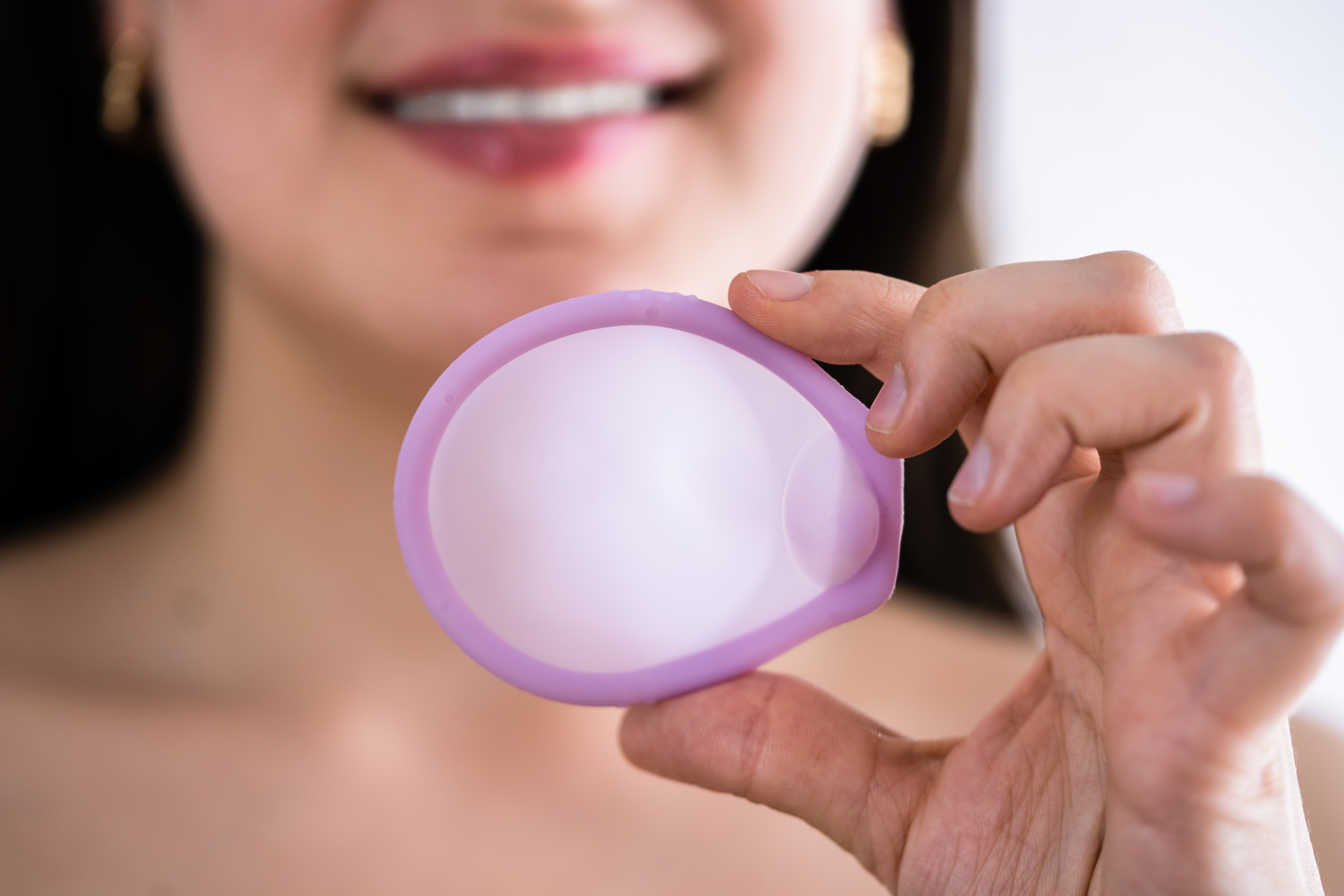Using a diaphragm is a form of birth control. It prevents pregnancy by creating a barrier between a woman's uterus and a man's sperm. A diaphragm is a reusable dome-shaped cup. It fits over the opening of the cervix. It is common to use a diaphragm with spermicide. This is a gel, cream, or foam that kills sperm.
There are 4 types of diaphragms. They are made of either latex or silicone. The most common type is the arching spring diaphragm. It has a firm rim and is easiest to insert. It works best for women who have weak vaginal muscle tone. The coil spring diaphragm has a soft rim that is flexible. It works best for women who have average vaginal muscle tone. The flat spring diaphragm is similar but has a thin rim. It works best for women who have strong vaginal muscle tone. You can use a diaphragm introducer tool to insert both the coil spring and flat spring types. The wide seal rim diaphragm is a silicone option. It is best for women who are allergic or sensitive to latex. It comes in arching spring or coil spring shapes.
See your primary care doctor or gynecologist to get a diaphragm. They will help you decide which type of diaphragm is best and prescribe it for you. They will do an exam to measure you and find the correct size. If it is too small, it may fall out or not block sperm. If it is too big, it will cause discomfort. The most common size is 75 millimeters (mm). It is important that your diaphragm fits right. Your doctor will show you how to insert it properly and help you practice. It should rest right behind your pubic bone.
Path to improved health
Once your doctor fits you and you've practiced inserting your diaphragm, you are ready to use it.
Get your diaphragm ready. Before you insert your diaphragm, you should apply spermicide to it. Put about 1 teaspoon of it in the cup, or dome. Spread it around the rim of the diaphragm. Do not use petroleum jelly or oil-based vaginal creams, such as Monistat. These can make tiny holes in the diaphragm. You also can put some spermicide in your vagina.
Insert your diaphragm. You can do this from several positions. It is best to lie down, squat, or stand with one leg propped up. Your legs need to be open wide. Bending your knees can help. Once you're in position, follow these steps:
- Use one hand to fold the diaphragm in half with the dome pointing down. Hold your vagina open with your other hand.
- Put the diaphragm into your vagina and aim for your tailbone. Push the diaphragm as far back into your vagina as you can.
- Use one finger to push the front rim of the diaphragm up behind your pubic bone. Aim for your belly button.
Check the placement of your diaphragm. With your finger, feel for your cervix through the dome of the diaphragm. The cervix will feel firm, but not bony. It feels a bit like the tip of your nose. If you cannot feel your cervix or if it is not covered, then the diaphragm is out of place. You need to remove the diaphragm, apply more spermicide, and insert it again. The diaphragm should not fall out when you cough, squat, sit down, or walk. The diaphragm is in place if it is above your pubic bone.
Use your diaphragm. You must use your diaphragm correctly each time you have sex. With spermicide, this method can prevent pregnancy. You should never use a diaphragm during your menstrual period. You will need to use another form of birth control at this time. Do not douche while you use a diaphragm. Do not leave a diaphragm in your vagina for more than 24 hours. This can cause irritation, infection, or a medical condition called toxic shock syndrome.
You need to apply more spermicide if you have sex more than once. Put some in your vagina, but do not remove your diaphragm. After sex, leave your diaphragm in place for at least 6 hours. To remove your diaphragm, hook your finger on the front rim. Gently pull it down and out. Try not to tear a hole in it with your fingernails.
Take care of your diaphragm. Wash your diaphragm with mild soap and water after each use. Rinse it off and allow it to air dry. Store the diaphragm in a container that is cool and dry. Check your diaphragm often for holes, tears, or leaks. To do this, fill the dome with water and look for damage. If you find any, do not use the diaphragm again. Get a new one from your doctor. If you keep using it, you increase your risk of getting pregnant.
Things to consider
Once a year, your doctor should check the fit of your diaphragm. It should be replaced about every 2 years. You will need a new one if you have a baby, have pelvic surgery, or gain or lose more than 15 pounds.
When you use a diaphragm and spermicide together, the prevention rate ranges from 70% to 99%. The large range leaves room for misuse. Diaphragms do not protect you from sexually transmitted infections (STIs). They also can cause urinary tract infections (UTIs).
Call your doctor if you have any of the following problems:
- Vaginal pain
- Trouble urinating
- Painful or frequent urination
- Vaginal itching
- Abnormal vaginal discharge
- This can be a sign of toxic shock syndrome
Questions to ask your doctor
- Why should I use a diaphragm over another form of birth control?
- Are there any reasons why I can't use a diaphragm and/or spermicide?
- Does my insurance cover a diaphragm?
Resources
ADVERTISEMENT
ADVERTISEMENT




